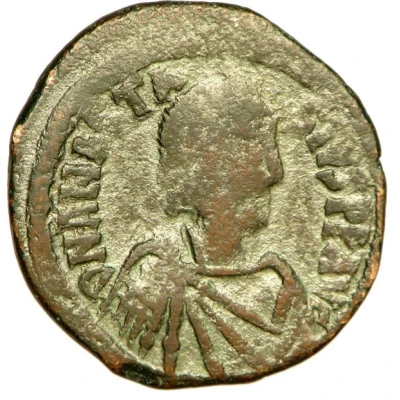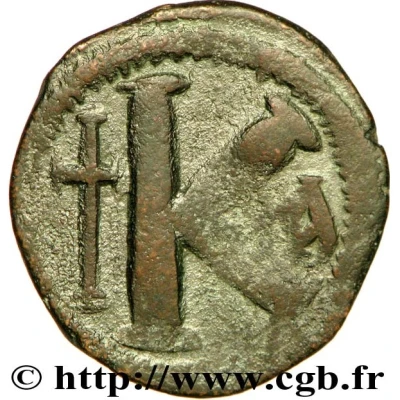


© CGB
20 Nummi - Anastasius I Dicorus Constantinopolis; Large Module ND
| Copper | 8 g | 28 mm |
| Issuer | Byzantine Empire (Byzantine states) |
|---|---|
| Emperor | Anastasius I Dicorus (491-518) |
| Type | Standard circulation coin |
| Years | 512-517 |
| Value | ½ Follis = 20 Nummi (1⁄360) |
| Currency | First Solidus Nomisma (498-720) |
| Composition | Copper |
| Weight | 8 g |
| Diameter | 28 mm |
| Shape | Round (irregular) |
| Technique | Hammered |
| Orientation | Variable alignment ↺ |
| Demonetized | Yes |
| Updated | 2024-10-04 |
| Numista | N#119494 |
|---|---|
| Rarity index | 85% |
Reverse
Large K, cross to left, officina letter to right.
Lettering: ♰K A
Translation:
K : "20" nummi (= ½ follis).
A : "1st" officina.
Comment
Post-reform copper coinage.Large Module (24-28 mm).
Anastasius I, (born 430?, Dyrrhachium, Epirus Vetus [now Durrës, Albania]—died July 9, 518, Constantinople [now Istanbul, Turkey]), Byzantine emperor from 491 who perfected the empire’s monetary system, increased its treasury, and proved himself an able administrator of domestic and foreign affairs. His heretical monophysite religious policies, however, caused periodic rebellions.
Interesting fact
One interesting fact about this coin is that it features an image of Anastasius I Dicorus, who was the Byzantine Emperor from 512 to 517 AD. He was known for his military campaigns and his efforts to reform the Byzantine Empire's currency, which led to the introduction of the nummi, a new coin that replaced the older follis. The nummi was made of copper and had a distinctive large module design, which made it easily recognizable. This coin is a rare and valuable example of the nummi currency and offers a glimpse into the economic and political history of the Byzantine Empire during Anastasius' reign.

